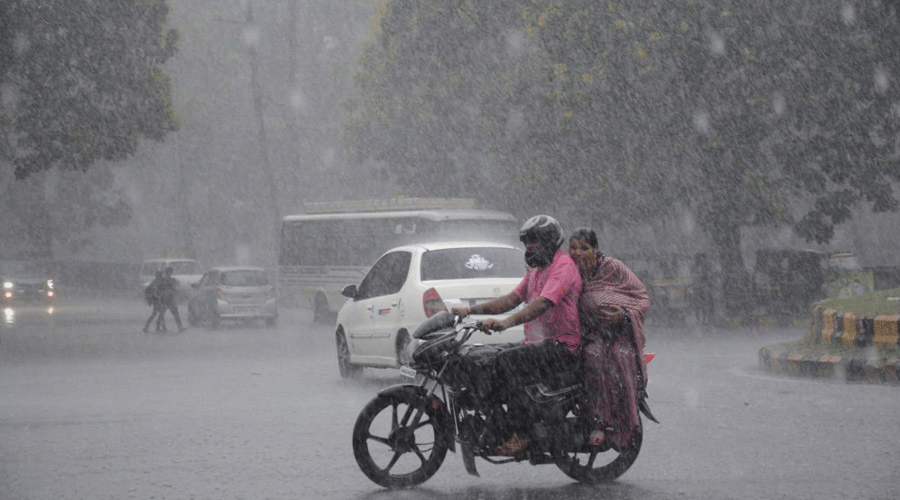Eighteen states received deficient rainfall over the past four weeks, but weather scientists are hoping that as the monsoon advances, rains during the coming months will make up for the current 10 per cent nationwide deficit.
Monsoon data released by the India Meteorological Department (IMD) on Tuesday show that 21 of the country’s 36 subdivisions — making up 54 per cent of the country’s landmass — had “deficient” or “large deficient” rainfall up to June 28.
Rainfall during the first four weeks of the four-month monsoon season exceeded normal levels by 60 per cent only in the east-northeastern region, contributing to the floods in Assam. In the other regions, rainfall has been 15 per cent to 31 per cent below normal. States with rainfall deficits include Bihar (minus 28 per cent), Delhi (minus 70 per cent), Kerala (minus 55 per cent) Uttar Pradesh (minus 78 per cent), Maharashtra (minus 33 per cent), and Uttarakhand (minus 53 per cent).
The IMD said the monsoon is likely to advance further into Bihar and move over parts of northern India over the next 24 hours. “Conditions would become favourable” for advance of the monsoon into parts of the northwestern region during the subsequent 48 hours, it said.
“We expect a revival starting today after about a week of low activity,” said Mrutyunjaya Mohapatra, the IMD’s director-general. The large rainfall deficits across several subdivisions during June, he said, were due to the lack of formation of low-pressure atmospheric systems over the Bay of Bengal.
Low-pressure systems drive moisture-laden winds and bring rain across the subcontinent.
“The 10 per cent deficit nationwide is not a source of concern yet,” said Shankarappa Sridhara, an agrometeorology specialist at the University of Agricultural and Horticultural Sciences in Shimoga (Karnataka). “Above normal rainfall in July, August or September can make up for this deficit.”
The IMD had earlier forecast that India would receive normal monsoon rainfall this year, predicting the rainfall quantum to be 103 per cent of the long-period average, raising hopes for good crop yields amid downward forecasts for India’s economic growth.
The June-September monsoon rain accounts for 75 per cent of the country’s annual rainfall and are critical for crops, water resources and the economy. Crops such as rice, maize, millet, oilseeds, pulses, sugarcane, and cotton are sown during these months.
Sridhara said rainfall had been deficient during June in recent years and likely represents a shift in rainfall activity towards the subsequent months.
“Farmers are learning from that experience. Sowing hasn’t started yet — we expect monsoon activity to pick up during the coming weeks,” he said.
Agrometeorology experts say rainfall during July and August was critical for crops.










